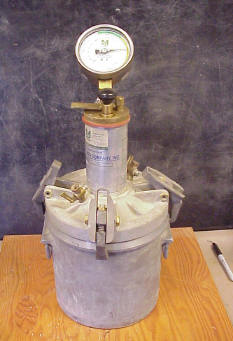When a road is built, we naturally want it to be durable. Roads can be built using different materials, but the quality of the end product depends on how it is constructed, not just the inherent properties of the materials themselves. So what does durability mean, and how can we achieve it? In general, durability means that the pavement can resist the forces in its environment that would lead to premature deterioration. This requires designing and constructing the pavement to prevent damage from potentially destructive forces. In this edition of the RoadReady newsletter, we’ll consider the factors involved in producing durable concrete pavements.
The Quality of Durability
Traditionally, durability in portland cement concrete (PCC) pavements has often been associated simply with higher cement content. This will inherently reduce the water-cement ratio of the mix and generally lower its permeability. As a result, it reduces the ability of moisture and other damaging forces to penetrate the concrete, and this tends to correlate well with PCC durability. However, it is not the only factor involved, and just using more cement will not address every potential durability concern.
Part of the issue is that durability is best understood as a general quality we look for in PCC pavements, rather than a specific physical property of the concrete. This means that although specific properties are important factors in PCC durability, such as strength, water-cement ratio, or air voids, none of them can provide a single measurement or prediction of how durable the pavement will be. Instead, we must also consider the environmental forces we want the concrete to be able to resist.
Durability and Freeze-Thaw Cycles
One of the forces that can damage PCC is freezing of water within the concrete and subsequent thawing. Since water expands when it freezes, the concrete must have a system of air voids so any water in the pavement has space into which to expand, instead of creating pressure that could fracture the concrete and reduce its durability. If a PCC pavement has an adequate network of air voids and has cured to sufficient strength, it should be able to resist environmental damage due to freeze-thaw cycles.

Some air may be trapped in concrete during the mixing process, and additional voids may be created if water in the concrete mix evaporates while the mixture is setting, leaving behind a network of pores. However, the resulting system of air voids is haphazard and may not be adequate to resist freeze-thaw pressure. In most cases, it is desirable to deliberately increase the air content in the mix, as well as to ensure that the air is uniformly distributed as tiny bubbles throughout the cement paste. This process is called air entrainment and can be achieved by a combination of methods, including use of chemical admixtures and adjustments to mix design, production, and placement techniques.
Aggregates and Chemicals
Another source of deterioration that affects concrete durability is the potential for damaging reactions and chemical attacks. These factors can be influenced both by the composition of the concrete mix and by pavement exposure to various substances, such as sulfates in soil or water, or the chemicals in deicing compounds.
With respect to the composition of the mix, the aggregate used in the concrete is an important consideration for PCC durability. This refers not just to the durability and soundness of the aggregate as a construction material, but also to how it may or may not interact with the cement. Because cement is a highly alkaline substance, it tends to produce certain reactions in materials with which it comes in contact. Some of these reactions are desirable, such as the hydration process that gives concrete its strength, while others may not be. For example, aggregates with highly reactive silica can produce severe pavement cracking due to an alkali-silica reaction. In this situation, PCC durability depends on choosing nonreactive aggregates or, if none are available, selecting supplementary mix materials to help mitigate the reaction.

When sulfate attack or other chemicals are a concern, durability is generally enhanced by reducing the water-cement ratio. As this lowers the permeability of the concrete, it also makes it more difficult for the chemical reaction to penetrate. Specific types of cement and supplemental materials can also be chosen that improve resistance to certain chemical attacks.
PCC Construction Procedures
Although durability depends on a good concrete mix design, proper construction procedures are also critical. In particular, consolidation, finishing, and curing of PCC pavements have a significant impact on durability. Consolidation is important for the uniformity of the mix along with its system of air voids. This affects the strength of the concrete as well as its resistance to freeze-thaw cycles, both of which are important for durability. Proper finishing and curing are needed to ensure that during the hydration process, the concrete has a favorable environment in which to develop the desired properties, including strength, abrasion resistance, and lower permeability.
Building Solid Concrete Pavements
Typically, one of the key requirements for a PCC pavement is that the concrete must achieve a certain level of strength. This is important to the durability of the pavement, but as we have seen, there’s also a lot more involved. A durable concrete mix design must take into account the environment the pavement will need to deal with. Suitable materials and good construction techniques are also needed. All of these factors combine to help make truly durable concrete pavements.
Additional Links
Transportation Research Board, Transportation Research Circular E-C171: Durability of Concrete: Second Edition: http://onlinepubs.trb.org/onlinepubs/circulars/ec171.pdf
National Cooperative Highway Research Program, Research Results Digest: Relationship of Portland Cement Characteristics to Concrete Durability: http://onlinepubs.trb.org/onlinepubs/nchrp/nchrp_rrd_270.pdf


Thanks.